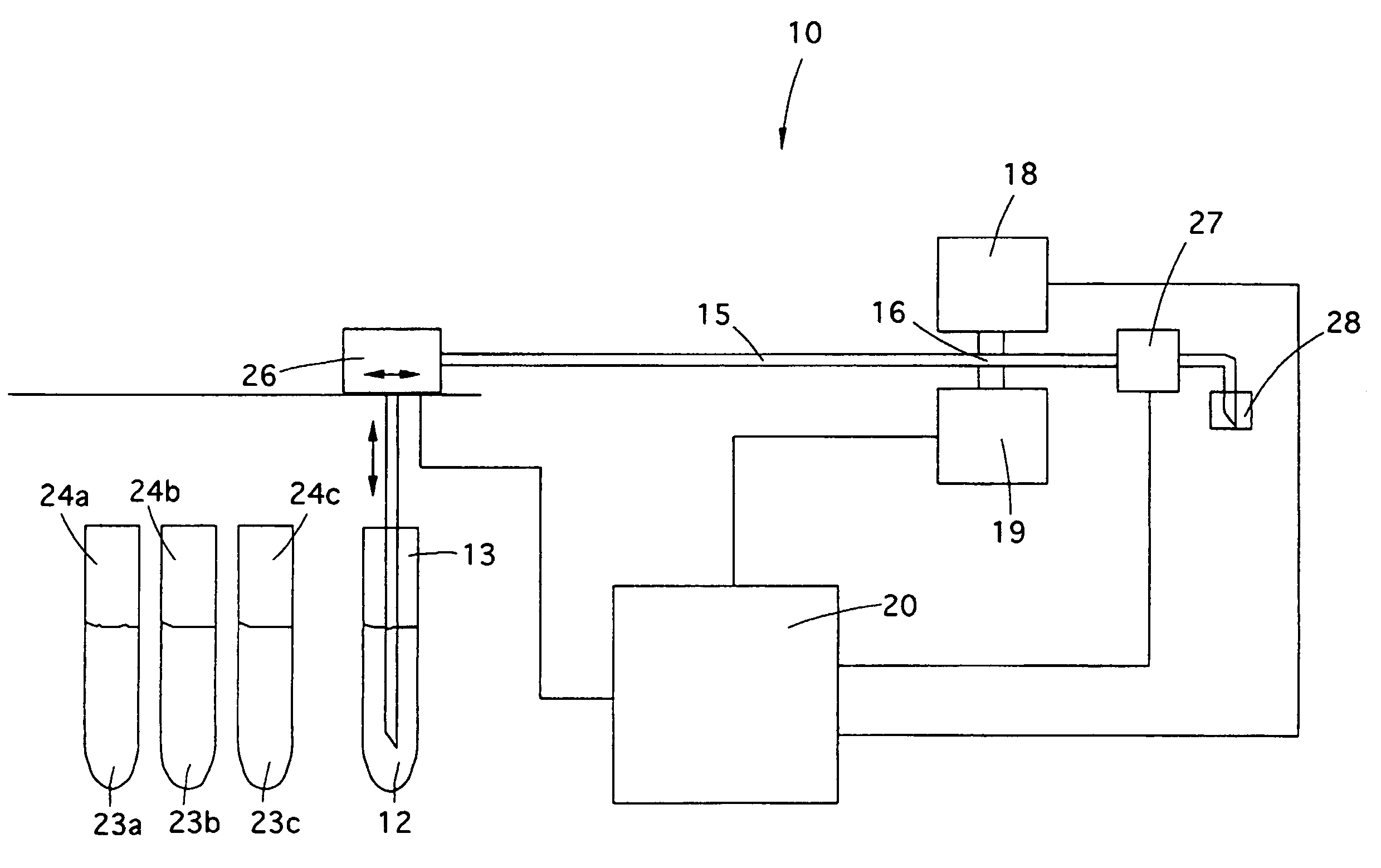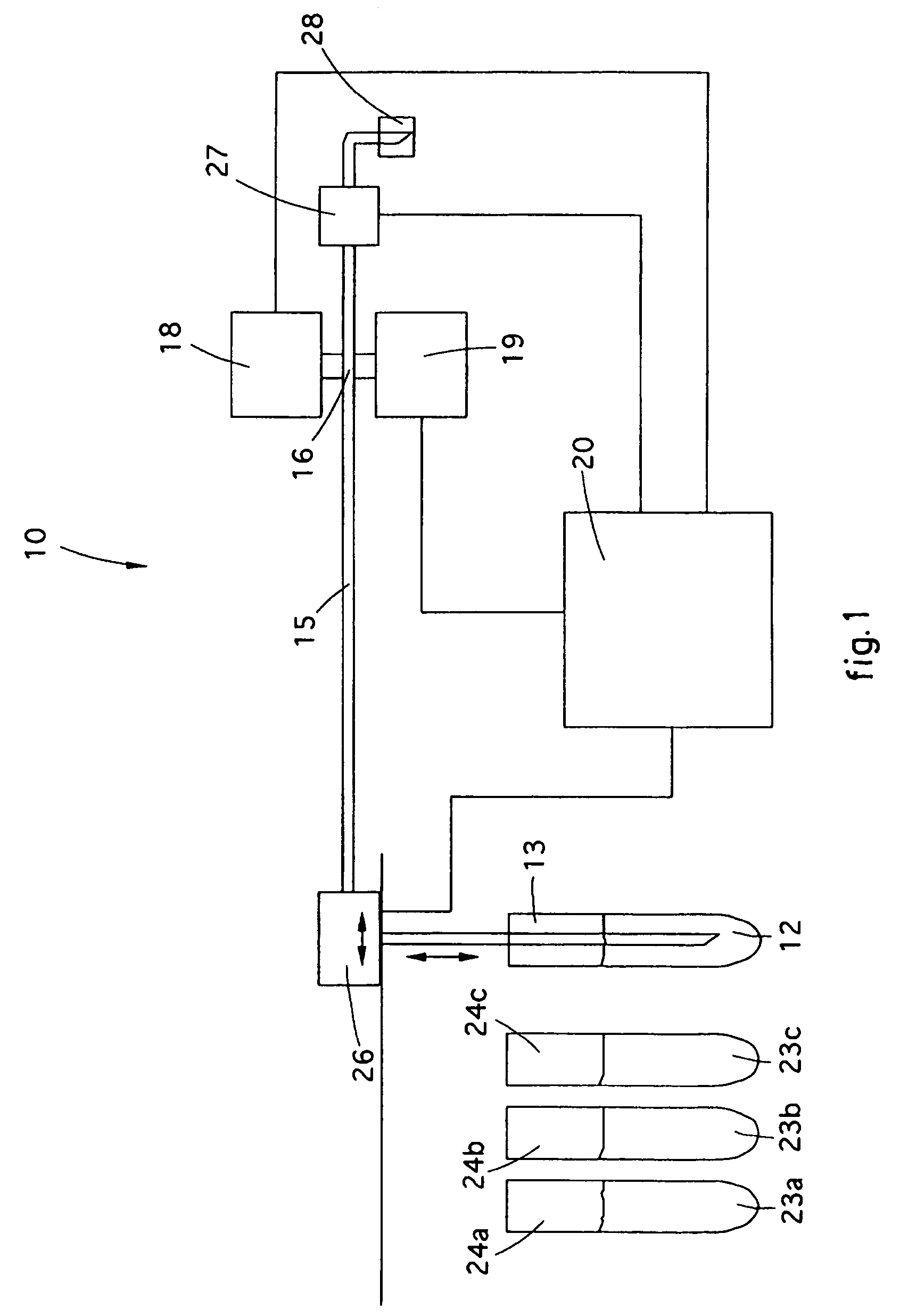Method for calibrating blood analysis machines
a blood analysis machine and blood technology, applied in chemical methods analysis, instruments, water testing, etc., can solve the problems of inability to achieve the standardized calibration of this test material, the inability to calibrate the process of measuring esr, and the analysis takes a long time compared with an automatic machine, so as to achieve the effect of limited range of error and great accuracy
- Summary
- Abstract
- Description
- Claims
- Application Information
AI Technical Summary
Benefits of technology
Problems solved by technology
Method used
Image
Examples
Embodiment Construction
[0045]With reference to FIG. 1, a method according to the present invention is used for calibrating a machine 10 that detects the erythrocyte sedimentation rate (ESR) by measuring the variation in the optical density of a blood sample 12 arriving, for example, from a test tube 13.
[0046]The machine 10 comprises a tube 15 defining a measuring volume 16 into which the blood sample 12 to be analyzed is injected, and whose flow is interrupted suddenly, causing a characteristic curve of optical density. The latter is called syllectogram and is indicated by the letter “S” in FIG. 2.
[0047]It is clear that the syllectogram can be obtained using other methods known in the state of the art for measuring the erythrocyte sedimentation rate (ESR) of the blood sample 12 by means of varying the absorbance.
[0048]On the curve S in FIG. 2 a point “a” is indicated where the value of optical density of the blood sample 12 is substantially constant, while the point “b” indicated represents the instant wh...
PUM
| Property | Measurement | Unit |
|---|---|---|
| size | aaaaa | aaaaa |
| size | aaaaa | aaaaa |
| sizes | aaaaa | aaaaa |
Abstract
Description
Claims
Application Information
 Login to View More
Login to View More - R&D
- Intellectual Property
- Life Sciences
- Materials
- Tech Scout
- Unparalleled Data Quality
- Higher Quality Content
- 60% Fewer Hallucinations
Browse by: Latest US Patents, China's latest patents, Technical Efficacy Thesaurus, Application Domain, Technology Topic, Popular Technical Reports.
© 2025 PatSnap. All rights reserved.Legal|Privacy policy|Modern Slavery Act Transparency Statement|Sitemap|About US| Contact US: help@patsnap.com



